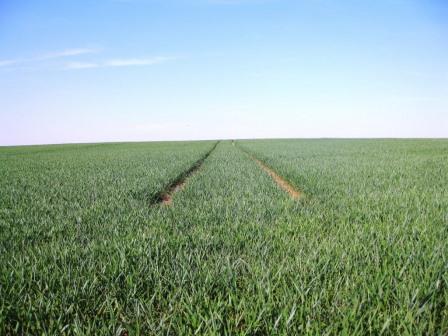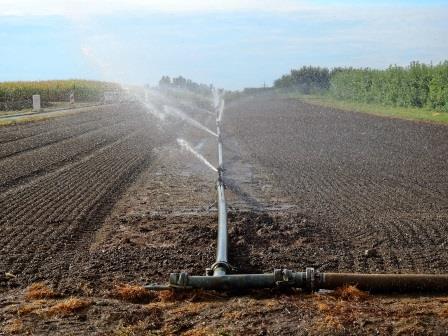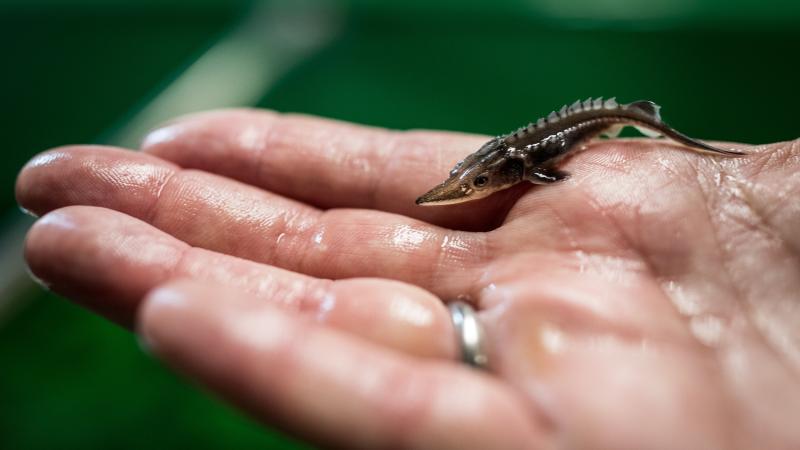
The agriculture of the present: Whether plowing, sowing or manuring - the use of modern machinery allows farmers today to till huge fields. | Photo: Pixabay
What does farming achieve?
Early in their development humans were nomads. They had no permanent home and lived through hunting and gathering. It was only when the last ice age ended around 12,000 years ago and the population began to grow that our ancestors in America, China and the Near East decided, almost simultaneously, to lead more sedentary lives. A prerequisite for this change in lifestyle was the cultivation of plants and maintaining livestock. The plants provided food and the wastes could be used, among other things, to feed animals which in turn provided milk, eggs and clothing, or which could be processed into meat. This was the beginning of today’s ‘agriculture’.
Since this time, agricultural methods have continuously developed. As early as over 5,000 years ago, ploughs were first used to turn over the soil to prepare for the distribution of seeds. Initially, these ploughs were pulled by oxen, which were replaced by more powerful horses from the 8th century onwards. Since the onset of the 20th century machines are widely used in agriculture, rendering the work easier and faster and thus more effective. Furthermore, irrigation systems ensure that large areas of crops can be watered, and the use of fertilisers ensures that plant yields can be increased. Pesticides protect plants from weeds and pests.
The worldwide population is growing and, with it, so is our demand for food. Also with increasing wealth, meat consumption increases too, In the last 50 years, our meat consumption has grown by 1.5 per person. To meet this demand, even more feed has to be produced which in turn requires increased use of pesticides and fertilisers but also increased areas of arable lands.

Monoculture | Photo: Pixabay
Why does agriculture have negative consequences on our environment?
Large areas of land are needed for the cultivation of plants and keeping of livestock. In 2015, more than half of the combined surface area of Germany was used for agriculture. In comparison, lakes, rivers and water courses only made up around 2.4 % of our total surface area. The expansion of areas used for agricultural purposes imposes a variety of adverse impacts upon the environment. In agriculture, crops are grown in monoculture, i.e. only one species of plant grows on a field at any period at a time. The other plants (weeds) are eradicated by herbicides to minimize concurrence, which leads to a decrease in species diversity. In addition, monocultures are more susceptible to pests since they can spread more easily in a homogenous group. These pests are treated with pesticides to ensure safe production. The immediate result is that fungi, insects etc. are diminished by the treatment.
A further problem is that agriculture requires large amounts of water for irrigation of crop fields. This water is taken from groundwater or rivers. Groundwater reserves are valuable sources for drinking water which is abstracted for the irrigation and the water that is not fixed in lands goes back into the water cycle. The use of river water in areas of low rainfall, has the potential to partially dry out the watercourse when too much water is removed.
In addition, our rivers are being heavily polluted by harmful substances and high concentrations of nutrients. This is largely due to the use of pesticides and fertilisers in agriculture: pesticides are washed into the ground with the rain, where they are partially taken up in the roots of the plants. The rest seeps into the ground water and into the rivers along with the rain. Once in the rivers, the pesticides cause great damage to the water dwellers which take them up. As many pesticides are hard to break up, they often accumulate in the food chain in many animals they adversely affect the ontogenetic development or lead to stress reactions or accumulate in the body reducing the overall fitness. From insect larvae, to amphibians, to fish and water birds the poison is accumulated in the food chain. Ultimately, the dangerous cocktail of chemicals often lands up on our own plates.
Similar to pesticides, fertilisers can also lead to big problems in our water systems. Among these is included the excretions of livestock – so-called slurry. It is through slurry as well as through chemical fertilizers that nutrients such as nitrogen and phosphorous end up in our waterways. In large amounts, these nutrients lead to the overproduction of plants in the water. This can lead to a reduction in oxygen availability through the degradation progress, which causes fish kills, enhances the growth of bacteria, or of water fungi on a massive scale.

Bewässerungsanlage | Foto: Pixabay
What can farmers do to help protect our waters?
Field irrigation puts people and the environment to the test, above all in regions with low rainfall. The removal of freshwater from the rivers is often larger than the amount gained back from the rain. In addition, more than 25% of water provisions are often lost due to evaporation or seepage when transported over long distances via irrigation systems. This could be avoided through the use of closed pipes.
To avoid the damaging effects of pesticides and fertilisers for water dwellers, a more responsible use of these substances is necessary. This includes compliance with restricted periods for slurry exportation – the use of fertilisers should be particularly restricted in winter and autumn, as the ground is not extensively planted at this time and chemical processes to break up the slurry is slow due to low temperatures. In addition high precipitation increases the wash-out of the nutrients into the adjacent ditches. This approach, however, receives a lot of criticism from farmers concerned about their yields.
In addition, protective areas between farmland and water could help reduce the entrance of undesirable substances into the water. A mere 10-25 Meter wide strip is sufficient toe effectively disrupt nutrient input into the water courses and also helps to prevent pesticides to reach them. These protective areas are called ‘riparian strips’ and feature bankside plants which take up harmful substances from farmland like a filter, and break them down. At the same time, they offer shelter for many species and are often used as spawning grounds by many fish and amphibians.



